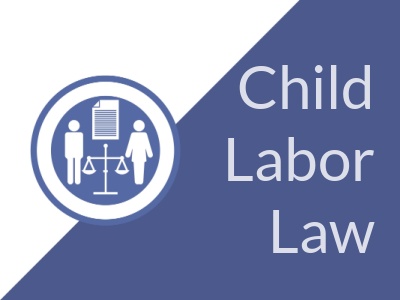By Savanna L. Shuntich for HR Daily Advisor
According to the Department of Labor (DOL), recent years have seen an enormous increase in the amount of child labor violations within the United States. For example, the DOL found child labor violations affecting 5,792 children in fiscal year (FY) 2023, up from 3,876 in FY 2022. In response, Congress, the Biden administration, and the press have turned their focus to the issue. Though the high-profile cases were in manufacturing facilities and food production, all employers must be diligent about combatting child labor. The DOL has made it clear that it intends to hold companies accountable for violations by contractors and suppliers. Even companies not employing workers in targeted industries are required to ensure their supply chains are free of child labor.

Violations on the Rise
The rise in child labor violations within the United States is attributable to a complicated array of social and economic factors. Increasing poverty and violence in Central American countries, such as Guatemala and El Salvador, has encouraged a migrant crisis at our southern border. Many unaccompanied minors are being trafficked across the U.S. border with the promise of earning money to feed their families.
These children are then being provided with high-quality, false documentation to obtain employment prohibited for anyone under 18. For example, in July a 16-year-old Guatemalan boy was killed while cleaning a poultry plant in Hattiesburg, Mississippi, after allegedly submitting documentation to the plant’s staffing agency stating he was in his 30s.
Agency Action
The Fair Labor Standards Act (FLSA) creates restrictions on the hours and types of industries and occupations in which a minor may work. For example, minors are prohibited from working in certain occupations such as coal mining that are deemed too dangerous by the DOL’s hazardous orders (HOs). For nonagricultural roles, there are weekly hourly maximums for those under 16 and rules on what times of day those minors may work. There are often companion restrictions at the state level.
Penalties for violators can include civil money penalties (CMPs) and bruising “hot goods” injunctions prohibiting the shipping of any products produced in and about an establishment where child labor violations occurred in the past 30 days. In addition, the DOL has substantially increased its enforcement penalties for child labor violations—up to $71,031 for death or serious injury and up to $142,062 for willful cases.
In response to the child labor crisis the DOL and Health and Human Services (HHS) (the agency tasked with safekeeping of unaccompanied minors) launched a task force in February 2023 to combat the issue. Additional agencies including the Department of Justice were added to the effort, which is designed to cross-train employees and step-up enforcement and information sharing between agencies. Separately, Congress introduced legislation to increase the maximum penalties for child labor violations. This issue is the subject of intense scrutiny, and the DOL has made it clear that it will pursue companies for violations both by suppliers and contractors.
Steps to Take
To avoid child labor violations, all employers should have strong policies prohibiting violations of child labor restrictions and ensure all levels of management have training on those restrictions. Even if the risk of a minor using false documentation to secure employment in a particular industry or work environment is low, there are many other issues that may arise—such as allowing otherwise lawfully employed minors to work in excess of hourly minimums.
Additionally, companies should engage third parties to conduct regular audits of their workforce and implement technological solutions (e.g., biometric timeclocks) whenever possible to ensure the person hired is the individual who shows up for work. Finally, employers should enter into contracts requiring suppliers and contractors to take these same precautions.
Child labor violations even in the company’s supply chain can create a legal and public relations nightmare for unwary employers.
